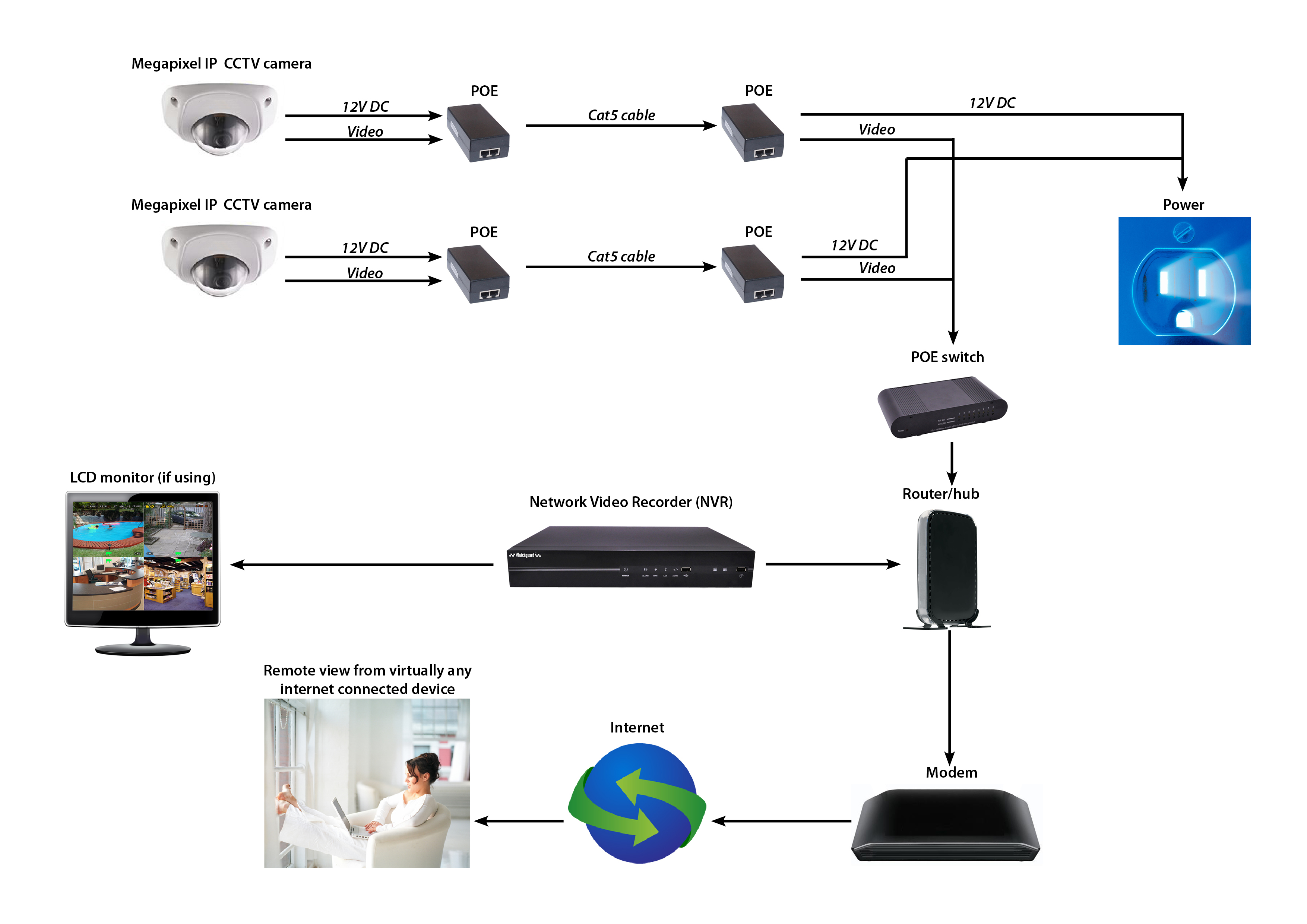This article outlines the main advantages of each type of CCTV technology to help you decide what will work best for you. And please call us on 0508 11 00 22 or email us if you have further questions.
What are the different CCTV technologies called?
- Network IP CCTV – also referred to as HD (high definition) or MP (megapixel) CCTV
- Analog CCTV also referred to SD (standard definition), traditional, conventional, digital or analogue CCTV
- HDCVI CCTV stands for High Definition Composite Video Interface and can sometimes be referred to as high definition analog CCTV
What CCTV technology is best for me?
There is no doubt that an IP CCTV system will give a much higher resolution picture with better detail and functionality. Many companies with existing analog systems are choosing to upgrade to IP and the majority of our new installs are IP.
HDCVI systems work well if high definition recording would be advantegous but it is important to keep the cost of installation low. Or if you have an extensive existing analog system and would like to upgrade to high definition using the existing camera cables to keep costs down. Standard analog CCTV may be the best option in limited situations.
What is the difference between analog, HDCVI and IP surveillance systems?
A quick comparison:
- Analog – uses coax cable with BNC connectors, cable run length of up to 350 metres, with a maximum resolution of 0.4MP (720×576)
- HDCVI – uses coax cable with BNC connectors, cable run length of up to 300 (at 1080P) to 500 (at 720p) metres, with a maximum resolution of 2MP (1080P – 1920×1080)
- Network/IP – uses CAT5e or CAT6 cable with RJ-45 connections, cable run length of up to 100 metres, with a maximum resolution of 12MP (4K – 4000×3000)
Recording:
All three technologies use cameras to record images onto a recording device. In a SD or analog system this is a DVR (Digital Video Recorder) and in an IP system it is an NVR (Network Video Recorder). HDCVI systems use a hybrid recorder. All these devices record, playback and store video footage (plus you can remotely view video).
The camera lens sends the image the camera sees to a digital image sensor. Here the signal is processed by the camera’s digital circuitry (DSP).
In an analog or HDCVI CCTV system the signal is then converted to analog and sent to the DVR over copper wires (coax or UTP) where it is converted back to digital, compressed and recorded by the device. Conversion from digital to analog and then back to digital can create a loss in recorded image quality when comparing the output from the cameras image sensor to what is recorded on the DVR.
In an IP system however, the camera itself compresses and encodes the digital signal and then sends it to the NVR via IP (Internet Protocol)1. The NVR then records or copies the actual video file from the camera. Because there is no conversion between digital and analog and back there is no loss in picture quality.
Wiring:
Normally an analog system works on a star layout where each camera has it’s own individual coax cable which runs back to the video recorder. Power for the camera can be supplied locally at the camera or run along with the coax cable.
HDCVI works in a similar way where each camera has it’s own coax cable which connects to the recorder. This means it can often be easy to upgrade an old analog system to high resolution HDCVI using the existing cabling. This is great for multi-site installations or for budget conscious upgrades.
In comparison, a network camera installation can be more complicated. Analog and HDCVI cameras have their own cable solely for the camera signal whereas network cameras can share the CAT5e (or CAT6) cable with other devices. This can give some flexibility with small installations to use an existing office network, reducing the amount of cables required. However, a larger installation will need dedicated cables to be run to allow for sufficient bandwidth.

